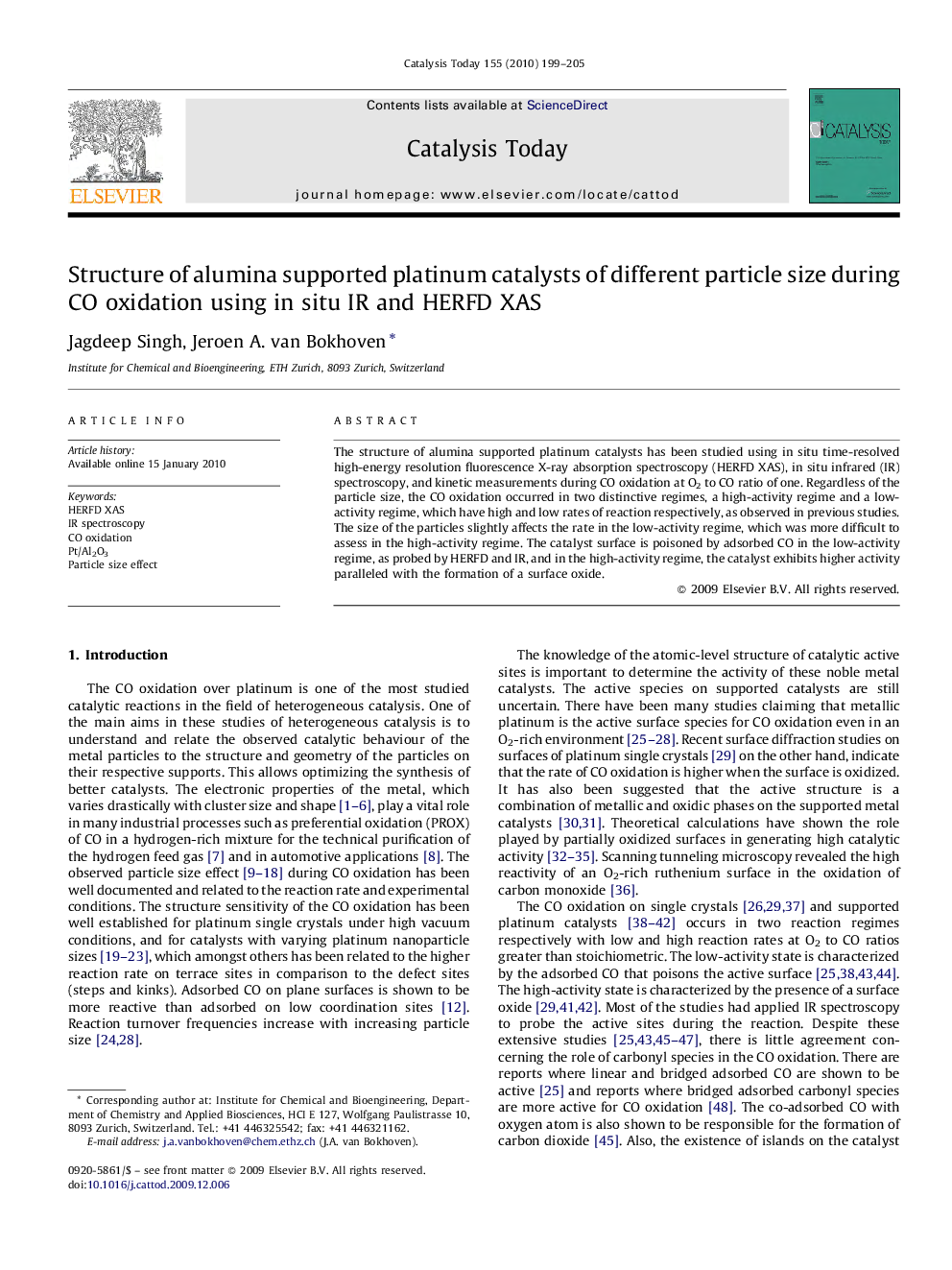| Article ID | Journal | Published Year | Pages | File Type |
|---|---|---|---|---|
| 56164 | Catalysis Today | 2010 | 7 Pages |
The structure of alumina supported platinum catalysts has been studied using in situ time-resolved high-energy resolution fluorescence X-ray absorption spectroscopy (HERFD XAS), in situ infrared (IR) spectroscopy, and kinetic measurements during CO oxidation at O2 to CO ratio of one. Regardless of the particle size, the CO oxidation occurred in two distinctive regimes, a high-activity regime and a low-activity regime, which have high and low rates of reaction respectively, as observed in previous studies. The size of the particles slightly affects the rate in the low-activity regime, which was more difficult to assess in the high-activity regime. The catalyst surface is poisoned by adsorbed CO in the low-activity regime, as probed by HERFD and IR, and in the high-activity regime, the catalyst exhibits higher activity paralleled with the formation of a surface oxide.
